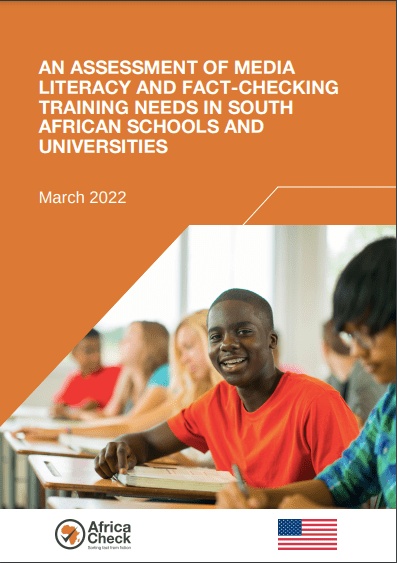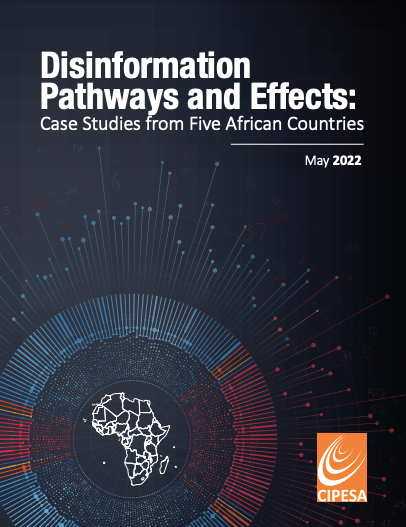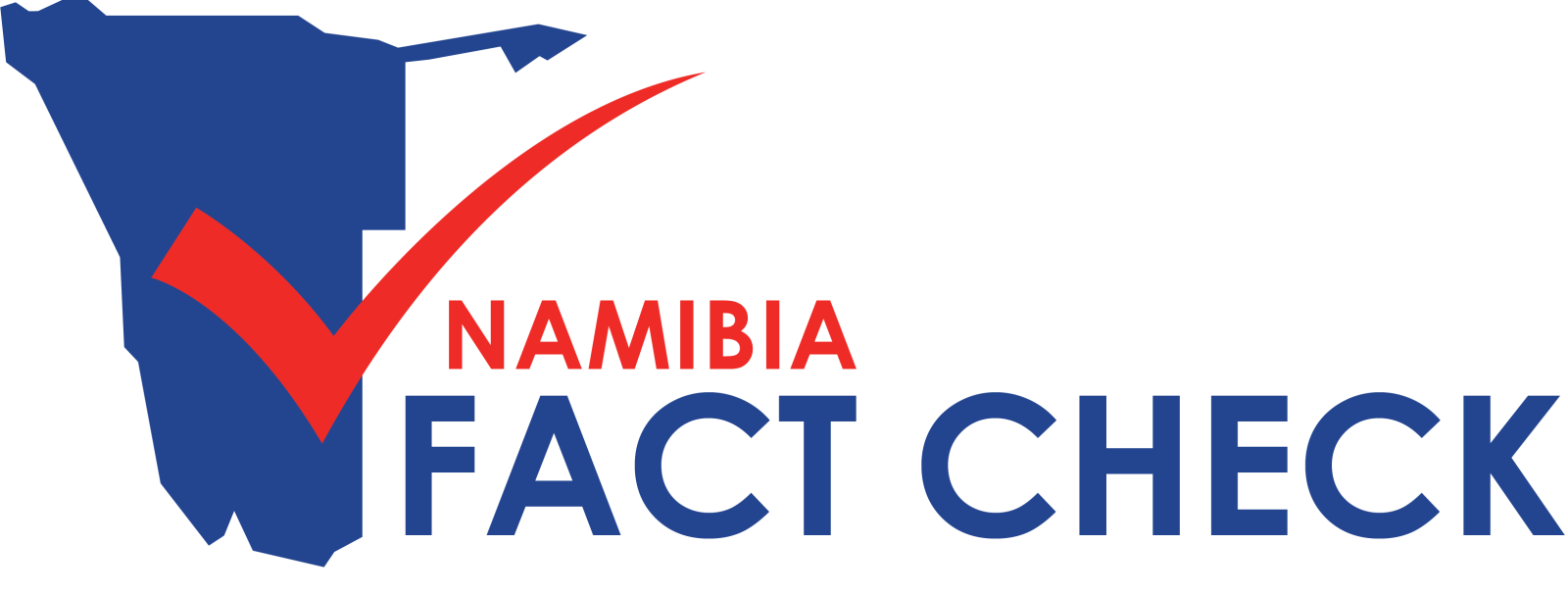Image courtesy: Namibia Fact Check
A number of good continent-focused studies and reports have been released recently, and two stand out especially.
First, in March 2022, an interesting report on media and information literacy teaching in the South African education sector was released.
The report, titled ‘An Assessment Of Media Literacy And Fact-Checking Training Needs In South African Schools And Universities’, was commissioned by Africa’s oldest fact checking service, Africa Check, as part of a project called ‘Becoming a Responsible Consumer of Media’, and was funded through a grant from the US Embassy in Pretoria, South Africa.

The Africa Check report could also be relevant to Namibia – given the similarities in factors and conditions affecting the two societies and education systems – and could be used as the basis to start serious discussions around what sort of media and information literacy should be mainstreamed through the Namibian education sector, both at basic education and tertiary education levels.
Among the 10 findings reported were the following:
- Media literacy can be understood as an ecology of skills, such as the ability to read media texts critically, to understand the relationship between media and audiences, and to know how the media production process works. Our research has made clear the importance of adding a new item to this ecology, namely misinformation literacy, which can be seen as a way of acquiring the critical and technical skills needed by media users to counter the spread of misinformation online.
- There exists no nationwide, structured and uniform teaching of media literacy in South African high schools, even though some competences are part of the curricula of different subjects, including life orientation, English, technology and history.
- Where media literacy does form part of existing curricula, a wide range of skills are being taught, particularly how to use the media, how to produce media content and how to be safe while online. However, much less focus falls on how to fact-check and verify the media.
- We found evidence that media literacy is taught in some shape or form in all South African universities where courses on journalism, media and communication studies are offered. However, these skills are not taught as standalone subjects, but integrated into larger modules.
- At South African universities, there is no centralized curriculum, so individual lecturers are free to develop their own course content.
- The majority of high school educators said they felt confident in their own abilities to teach media literacy.
- Media literacy training at high school level is impeded by several factors. Among these, inequities in access to digital devices and online resources is the most significant.
Among the five recommendations, the following:
- Media literacy curricula should be developed with multimedia materials and multimodal delivery methods in mind. A strong focus on mobile phones as vehicles for delivery is recommended, due to the ubiquity of mobile phones in South Africa, the relative ease of access and the possibility to zero-rate certain websites that may be accessed in mobile mode.
Disinformation pathways
The other interesting study is the ‘Disinformation Pathways and Effects: Case Studies from Five African Countries’ report produced by the Uganda-based Collaboration on International ICT Policy for East and Southern Africa (CIPESA), and released in May 2022.

The report states of the purpose of the study:
“The purpose of the study was to understand the nature, perpetrators, strategies and pathways of disinformation, as well as its effects on democratic actors such as civil society, bloggers, government critics, and activists. Further, the study reviewed the adequacy and effectiveness of remedial measures by social media platforms as well as government responses to disinformation. It is hoped that the evidence generated will inform multi-stakeholder advocacy for greater transparency and robust action by platforms and governments to minimise harms and to combat disinformation.”
– CIPESA
The report looks at how and by whom disinformation has been spread across five countries – Cameroon, Ethiopia, Kenya, Nigeria and Uganda.
This report is well worth a read.

